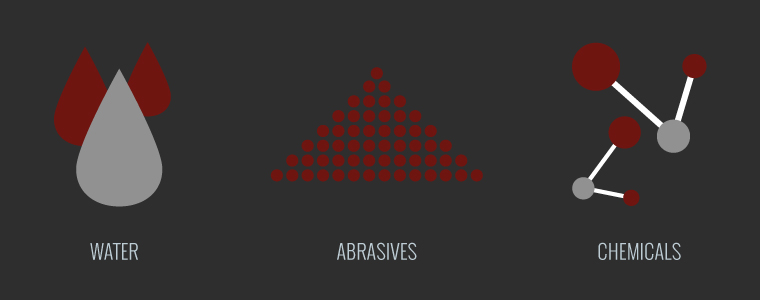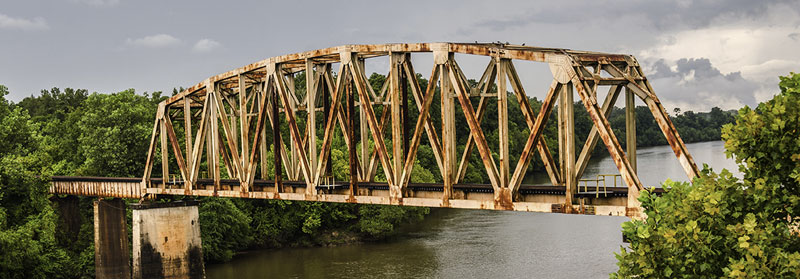Removing an existing coating often plays an important step in surface preparation. Perhaps this is part of a regularly scheduled maintenance plan and the coating has simply outlived its intended service life. It could also be because the coating has failed and the damage must be repaired and the asset recoated with a different product. Or maybe an existing coating is an eyesore, and the owner wants it removed to beautify the asset.
Whatever the reason, owners and facility managers at this stage are likely to enter into research mode for the best surface preparation solutions for removing an existing layer of paint. It’s then that they find out there are a number of different methods for removing a coating. Of the surface prep solutions available, chemical stripping is probably the most often used, but which one will be right for your project depends on the substrate, the coating being removed, and the surface preparation standard you’re hoping to achieve.

Water
Water cleaning occurs at low-pressure levels and is an acceptable method for removing visible dirt and other surface contaminants. In order to remove a properly bonded coating, higher PSIs are needed to make water a viable medium for removing an unwanted coating.
Pressures above 30, 000 PSI are usually necessary for coating removal. High-pressure water jetting is often a great option for stripping away old paint or finishes. It is less expensive than blasting with abrasives under some circumstances and requires fewer containment measures. It is also less likely to disturb sensitive environments, making it ideal for the marine coatings industry.
Because pressures must be high in order for water jetting to be effective, it is not the right method for every substrate. For anything less than strong, stable concrete, other methods should be explored.
Abrasives
Whereas water jetting removes contaminants from the surface of an asset, abrasives actually erode the surface for the purpose of removing the coating. Because older abrasive materials caused too much damage to masonry surfaces, these materials were seen as practical only for metal substrates.
Advances in micro abrasives now limit the amount of damage to the substrate, making abrasives a viable, effective method for removing coatings even on less resilient substrates. If micro abrasives are used, it is important to verify through tests that they are up to the task of removing the coating.
Chemical stripping
Chemical stripping agents neither “wash” off a coating, nor do they erode the substrate. Instead, chemicals react with the coating and dissolve it from the surface. This is often the most successful method for removing a coating when adhesion is tight.
Some chemical stripping agents are specifically formulated to remove certain coatings, so it’s important to make sure the chemical and the coating are compatible for removal. This method also calls for much greater knowledge of the product and the practice when compared to other methods. Any operation stripping with chemicals should have staff on hand that understands the safety and environmental concerns surrounding their use. Safety data sheets for chemical stripping agents should always be on-hand and understood.
Talk to a painter
This was a brief rundown of a few methods for coatings removal. Which one, if any, is right for your project will depend on the makeup of the substrate, the type and bond strength of the coating being removed, and what surface preparation standard is required by the project specifications.
It is especially important when working with chemicals that they are being used safely and by professionals. It’s crucial to first determine if any heavy metals are present in the coating being removed. Protecting workers from lead paint exposure is a necessity, and older materials may require the use of containment equipment, respirators and close monitoring.
Just because we specialize in applying industrial coatings doesn’t mean we don’t know a thing or two about taking them off. If you have a project that may require coatings removal, and would like to discuss our surface preparation solutions, get in touch with us.








